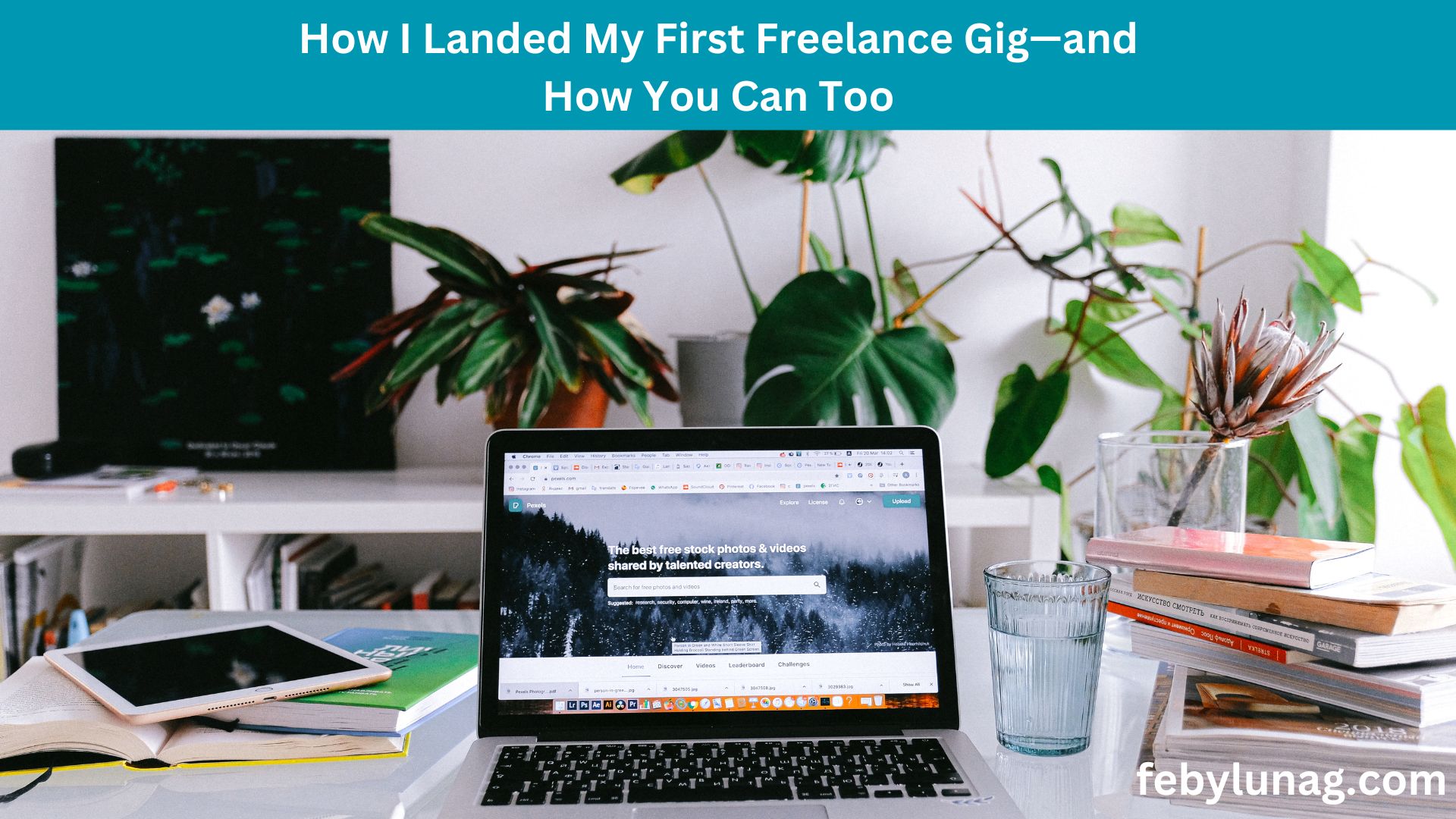Breaking into the freelance world can feel like standing on the edge of a cliff, unsure if you’ll land smoothly or crash hard. I know, because I was there. My journey into freelancing wasn’t perfect, but it was real, and it worked. In this blog, I’ll walk you through the exact steps I took to land my first freelance gig—and how you can use these strategies to start your own successful freelance career, even if you’re starting from scratch.
Where I Started (Spoiler: I Had No Experience)
When I first explored freelancing, I didn’t have a portfolio, testimonials, or years of experience. What I had was:
- A laptop and stable internet
- Decent writing and admin skills
- A strong desire to work from home and control my schedule
Instead of letting imposter syndrome win, I decided to get resourceful. I treated my lack of experience as an opportunity to learn fast and prove myself.
Step 1: I Chose a Service I Could Start With Immediately
Rather than trying to offer everything under the sun, I focused on one thing I could confidently do: virtual admin support. I listed down tasks I could handle right away:
| Task | Why I Picked It |
|---|---|
| Email management | I already managed emails for my own inbox daily |
| Calendar scheduling | Easy to learn and organize |
| Data entry | Straightforward and low-pressure for a beginner |
I didn’t wait until I felt “ready.” I picked services that didn’t require fancy tools or years of training—just clear communication and attention to detail.
Step 2: I Built a Simple, Clean Profile
I started on Upwork. I didn’t have fancy credentials, but I made sure my profile was:
- Client-focused
- Clear and confident
- Honest about what I offered
What My First Profile Looked Like (Simplified):
“Hi, I’m a detail-oriented virtual assistant who can help you stay organized and stress-free. I specialize in inbox management, calendar coordination, and reliable admin support. You focus on your business—I’ll take care of the details.”
I also used Canva to design a professional-looking profile photo and cover image. First impressions matter.
Step 3: I Applied for Jobs That Matched My Real Skills
I didn’t apply for $100/hour gigs. I applied for entry-level jobs that:
- Matched my skills
- Had clear instructions
- Were posted by verified or active clients
Tip: I avoided generic pitches. Instead, I used the job post to customize each proposal.
Step 4: I Wrote Personalized Proposals (Here’s a Template)
I treated every proposal like a conversation—not a resume.
| Proposal Section | What I Wrote |
| Greeting | “Hi [Client’s Name], I just saw your job post and had to reach out.” |
| Connection | “I’ve done similar email management for a small online store owner. I love keeping things organized and making life easier for busy entrepreneurs.” |
| Confidence | “I’m reliable, responsive, and I take deadlines seriously. If you’re looking for someone to treat your business like their own—I’m your VA.” |
| CTA | “Let me know if you’d like a quick chat to see if we’re a fit.” |
This human approach helped me stand out, even without a portfolio.
Step 5: I Offered a “Trial Project” to Lower the Barrier
For my first client, I offered a small paid task (3 hours of inbox cleanup for $15). It wasn’t much, but it let them:
- See my skills in action
- Get results quickly
- Build trust without a big commitment
That trial turned into a weekly gig.
Step 6: I Delivered More Than Expected
Once hired, I didn’t just do what was asked—I added small extras:
- Organized emails into folders
- Created a simple email template for repeat responses
- Sent a quick Loom video update instead of a long email
Clients remember value. That’s how you earn long-term work and referrals.
Step 7: I Asked for a Testimonial—and It Worked
Once the first project wrapped, I kindly asked:
“Hi [Client’s Name], thank you again for trusting me. If you’re happy with my work, would you be open to leaving a short review I can add to my profile? It would help me a lot.”
They said yes.
Testimonial Snapshot:
“[Your Name] was professional, responsive, and thorough. I trusted her with my inbox and she made my life easier. Highly recommended.”
That one review gave me the confidence—and credibility—to apply for better gigs.
How You Can Land Your First Freelance Gig (Checklist)
Here’s your simplified roadmap:
| Step | Action |
| 1 | Choose a service based on what you already know or can learn fast |
| 2 | Create a clean, client-focused profile (LinkedIn, Upwork, Fiverr, or personal website) |
| 3 | Apply for small, clear jobs—focus on matching skills, not big money |
| 4 | Write personalized proposals that talk like a real person, not a bot |
| 5 | Offer a paid trial to reduce friction for the client |
| 6 | Overdeliver—add value, stay responsive, communicate clearly |
| 7 | Ask for a testimonial (and say thank you!) |
Tools That Helped Me Win My First Gig
| Need | Tool |
| Graphic for profile | Canva |
| Proposal writing help | ChatGPT |
| Profile + job access | Upwork |
| Time tracking | Toggl |
| Client updates | Loom |
What I Wish I Knew Sooner
- Don’t wait until you feel ready—start before you’re confident.
- Focus on client problems, not your lack of experience.
- Be polite, professional, and proactive in every message.
- The first gig is the hardest. After that, it snowballs.
Final Thoughts
Landing your first freelance gig isn’t about being the best. It’s about being resourceful, genuine, and helpful. You don’t need a decade of experience—you need the right mindset, some hustle, and a plan. If I can do it, you can too.
So start today. Pick your skill. Write your first profile. Send your first proposal. Your freelance journey begins with one small step—and that first step could change everything.







Leave a Reply